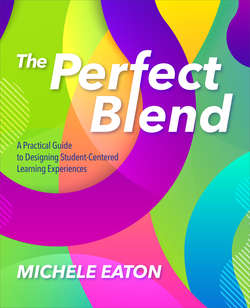Читать книгу The Perfect Blend - Michele Eaton - Страница 22
На сайте Литреса книга снята с продажи.
Designing the Perfect Blend
ОглавлениеAlthough the Clayton Christensen Institute defines seven specific models, I have found that there is more fluidity in most classrooms, enabling you to be creative with your implementation. You may find that you move from one model to the next throughout your day or year. You might also find yourself creating hybrids of these different types of blended learning in ways that do not fit a formal definition. That is okay! The goal for implementation should never be to exactly replicate a model of blended learning that is working somewhere else. So much depends on your own teaching style; the constraints of your particular school, district, or state; the lesson or subject you are teaching; and the unique students in your classroom. Ultimately, a solution that is very successful for one classroom may be a poor fit for another classroom’s teacher and students.
ARNETT ARTICLE
The other thing to keep in mind as you design your perfect blend is that it is not about the technology. Software, online lessons, and devices cannot improve learning on their own. A highly effective teacher is still the most important aspect of any classroom. The technology simply allows you to restructure your classroom in a way that puts an emphasis on student-centered learning, data-driven decision-making, and individualized instruction—all of which are possible only with a skilled teacher. Thomas Arnett (2018) wrote about this in his article “The Secret Element in Blended Learning” (bit.ly/secretelement), exploring John Hattie’s Visible Learning study, which ranked educational practices associated with academic achievement. Focusing on those practices specifically related to blended learning, Arnett found that although technology can have a positive impact on the classroom, the largest effect sizes show up when we are able to shift instructional practices. Technology becomes the lever that makes that work possible.
As you navigate this book, don’t expect a ready-made recipe for perfectly implementing an existing model of blended learning. Instead, you will be given a road map for finding your own perfect blend. We will examine the various components of blended learning to help you determine the characteristics that make the most sense for you, your students, and the content you want to teach. Determining the blended learning components that work best for you may be a process of trial, error, and refinement. My own journey to the perfect blend was not a smooth trip, but it may serve to help ease yours.
